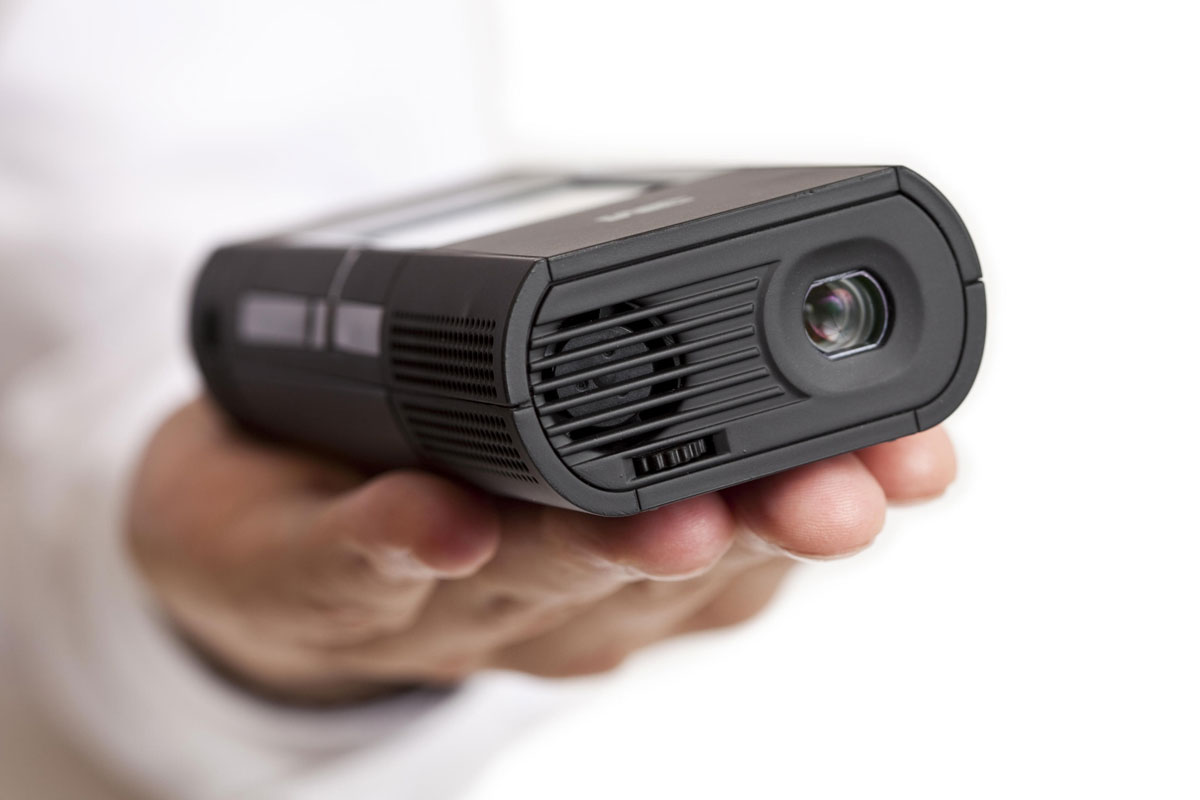3M MP180 Pocket Projector
The 3M MP180 has a touchscreen, apps and built-in WiFi - surely it's the perfect pocket projector? Unfortunately, Jim Martin discovers that it's far from perfect in our review.
It's commendable that 3M has gone further with the MP180 than any other pico projector before it, but the price reflects this. Given the unusable web browser, relatively poor image quality and whiny fan, Samsung's SP-H03 is still the better choice. It too has a built-in media player and a battery that lasts for two hours, but it also has slightly better image quality, it's more compact and is cheaper at around £200.
Next to the USB port is a proprietary A/V port. Two cables are included - one with VGA and a 3.5mm audio jack, and another with composite video and stereo phono audio connectors. 3M has chosen a sensible resolution for the MP180 - 800x600 is a standard Windows setting so it's easy to connect your laptop and project an undistorted image.

The MP180 is considerably larger and heavier than most pocket projectors.
Most people, though, are far more likely to use the built-in media player than connect an external device. As well as being able to play music, photos and videos, there are viewers for Microsoft Office files and PDFs. We had no trouble viewing PowerPoint presentations, even in the latest PPTX format, but video support is limited to MP4/H.264.
The 30-lumen brightness is enough for a moderately large image in a darkened room. We found it best to stick to around 40in or less, but that's still far bigger than any laptop screen. At this size, colours are fairly vibrant and accurate, but contrast at any screen size is disappointing.
The main problems, though, are typical of pico projectors. It was impossible to achieve sharp focus across the entire screen, while a vignette effect made the corners noticeably darker than the centre. Yet another issue was that colours weren't even across the screen. The white background of our test presentation had prominent yellow areas in addition to the darker corners.
Get the ITPro daily newsletter
Sign up today and you will receive a free copy of our Future Focus 2025 report - the leading guidance on AI, cybersecurity and other IT challenges as per 700+ senior executives
-
 Blackouts in Spain and Portugal could be a cyber attack
Blackouts in Spain and Portugal could be a cyber attackBoth countries are "paralyzed" by nationwide power outages
By Jane McCallion Published
-
 Cisco takes aim at AI security at RSAC with ServiceNow partnership
Cisco takes aim at AI security at RSAC with ServiceNow partnershipNews The companies claim Cisco AI Defense and ServiceNow SecOps will help address new challenges raised by AI
By Jane McCallion Published
-
 LaunchDarkly to "double down" on observability with Highlight acquisition
LaunchDarkly to "double down" on observability with Highlight acquisitionNews Highlight's observability tools will be integrated into LaunchDarkly's Guarded Releases software deployment service
By Daniel Todd Published